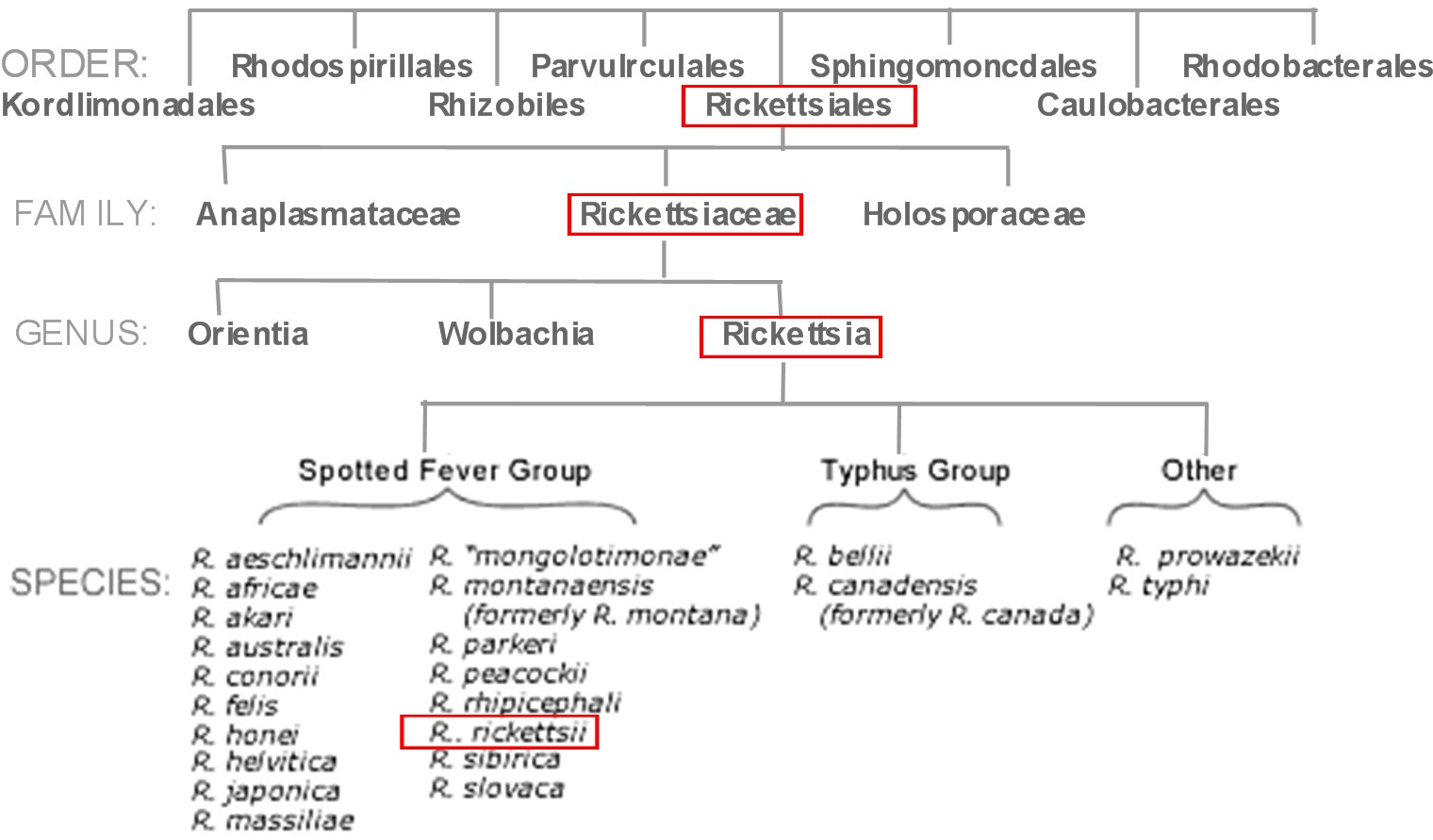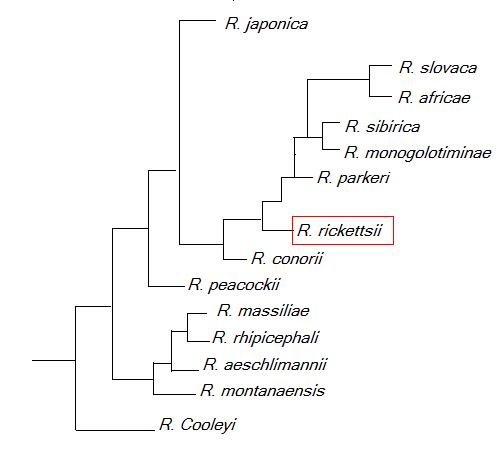Classification
Scientific name: Rickettsia
rickettsii
The name does not really mean anything in Latin the
genus Rickettsia was named after Howard Taylor Ricketts who was the first
person to discover Rocky Mountain Spotted fever
Common name: Cause of Rocky Mountain spotted fever
Gram stain: Gram-negative
Respiration: Aerobic
-
Domain: Bacteria
Rickettsia rickettsii is a unicellular microorganism -
Kingdom: Prokaryote
Rickettsia rickettsii is a unicellular microorganism that lack a distinct nucleus and membrane- bound organelles -
Phylum: Proteobacteria
Rickettsia rickettsii is gram-negative with an outer membrane mainly composed of lipopolysaccharides -
Class: Alpha Protobacteria
Rickettsia rickettsii is a bacterium that is a dangerous pathogen

-
Order: Rickettsiales
Rickettsia rickettsii can only survive as an endosymbionic relationship other cells -
Family: Rickettsiaceae
Rickettsia rickettsii inhabits an arthropod tissue and causes a terrible disease when transmitted to vertebrates -
Genus: Rickettsia
Rickettsia rickettsii is non-motile, gram negative, non-spore forming, varies in size and shape of bacteria
Note: It is thought that the genus Rickettsia are the closest living relatives to bacteria that were the origin of the mitochondria. -
Species: rickettsii
Rickettsia rickettsii is the cause of Rocky Mountain spotted fever
Phylogenetic tree of the spotted fever group. Rickettsia rickettsii is more closely related to Rickettsia conorii (Mediterranean spotted fever) and Rickettsia parkeri (Spotted fever rickettsiosis) due to their close genetic coding. Most of the spotted fever group need two host and normally show about the same characteristics, therefore the determining factor when trying to distinguish between the different bacteria is their genetic code.


